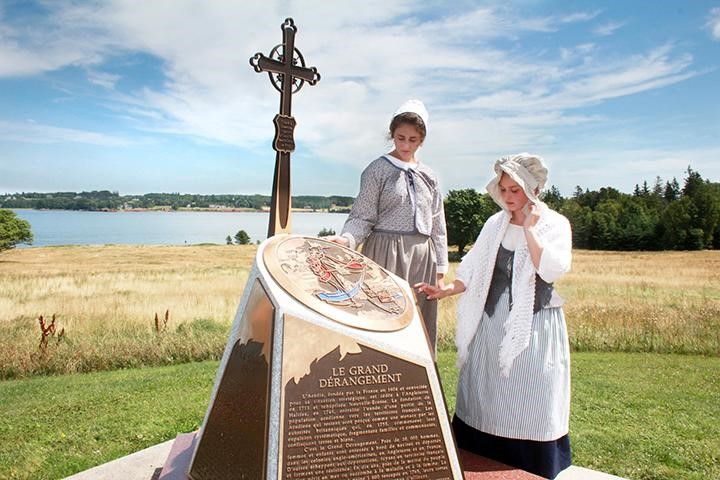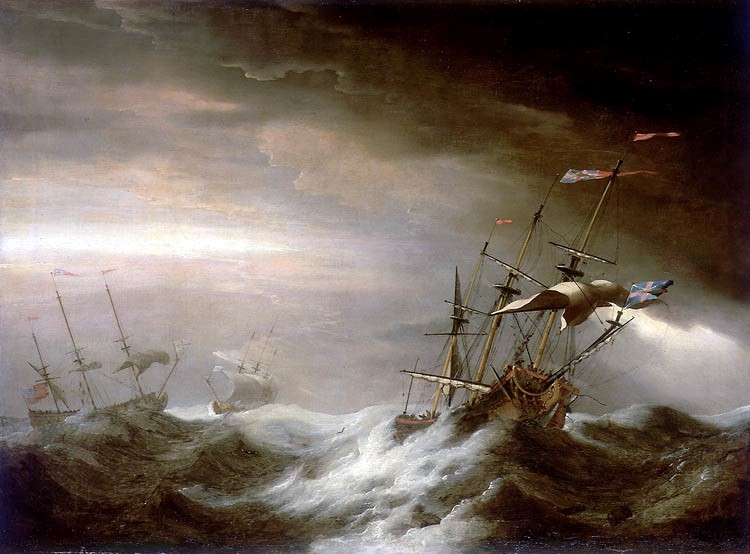
The Red Earth of Prince Edward Island (Torpedo Factory Art Center)
From Isle St. Jean to Prince Edward Island: a history to discover
Before the arrival of the French, ancestors of today’s Acadians, on Isle St. Jean (as large as metropolitan Toronto), the Mi’kmaq people populated this magnificent territory, which they called Epikwit meaning “cradled by the waves” or “cradle on the waves” in their native language. Jacques Cartier, the first visitor to the island, described it in 1534 at Cape Kildare near Alberton as “the most beautiful land you can imagine”. It was in 1720 (300 years ago) that the colonization of Isle St. Jean began with the Acadian establishments of Port LaJoye, the administrative and military center of the island, Havre St. Pierre (near Morell), Malpec (in the eastern part of Prince County) and Les Trois Rivières (now Brudenell), among other seaside communities, such as Havre à l’Anguille, Tracadie and Pointe de l’Est. From the outset, relations between the First Nation people who lived near Havre Quiquibougat (now New London Bay) and the newly arrived white islanders were friendly. Because the Acadians’ expulsion from Isle St. Jean (now Prince Edward Island) by the British crown in 1758 is generally unknown compared to that of Nova Scotia in 1755, we will briefly outline here this second Great Upheaval which is beautifully commemorated by the monument to the Acadian Odyssey at Skmaqn – Port LaJoye – Fort Amherst National Historic Site in Charlottetown.
The context of the time

At the outset, it is important to know that Isle St. Jean takes its name from the concession given to the Compagnie de l’Isle Saint-Jean by France with the express mandate to bring colonists and, above all, to develop the island’s agriculture. The key objective was to produce food for the fortress of Louisbourg because the land of Isle Royale (now Cape Breton Island) was not too fertile. The settlement of Isle St. Jean was slow at the beginning, simply because the French authorities could not convince the people of Acadia (Nova Scotia) to settle there permanently. In 1748, the population of white people did not exceed 700 islanders. However, at the time of the deportation of the Acadians from Nova Scotia in 1755, the population of Isle St. Jean did increase significantly. When Louisbourg fell to England in 1758, the island’s population rose to almost 5,000 inhabitants. The British army forced all but a few hundred Acadians to leave Isle St. Jean, even though France had not surrendered its sovereignty until 1763 when the Treaty of Paris was signed.
Despite the fact that many French names have been anglicized after 1763, the French toponymy remains impressive, displaying admirably the breadth of the French heritage on Isle St. Jean. According to the Office of the Commissioner of Official Languages of Canada, the northern part of the island, that is to say Prince County (Évangéline, Summerside) is mostly French-speaking today. The province has only three counties, Prince, Queens (Charlottetown), and Kings (Georgetown) in the East.
The deportation of the Acadians from Isle St. Jean in 1758

Every year since 2008, the francophone islanders commemorate on December 13rd the Deportation of the Acadians from Isle St. Jean in 1758 and the sinking of three carrier ships in which hundreds of Acadian people perished.

The Deportation of the Acadians from Isle St. Jean by the British took place from August to December 1758. Some 3,500 Acadians were forcibly taken on 22 ships to French ports on the Atlantic Ocean, mainly Saint-Malo, and on the English Channel. Three vessels, namely the Duke William, the Ruby and the Violet, were wrecked, causing several hundred casualties. The Duke William sank on December 13, 1758 off the coast of France, drowning more than 360 victims. About 1,700 Acadians, more than 50 percent of all deportees, died at sea during the 1758 deportation. The three-masted Mary, meanwhile, was severely affected by disease with approximately 255 deaths (almost all of them children). In contrast, hundreds of Acadians managed to flee to Canada, the upper reaches of the Miramichi River (in New Brunswick), and the French islands of Saint-Pierre and Miquelon off the coast of Newfoundland.

The Acadian Museum of Prince Edward Island in Miscouche, near Summerside Airport, visually illustrates roadside features of the Island Acadians’ journey in time and space, as well as their anchoring in Acadia.

List of the Acadian communities
- Port-Lajoye
- A lifeline beautifully starlit - Tracadie
- An ideal place in many ways - Savage Harbour
- French name change in respect of First Nations - East Point
- Cod’s country - Rustico
- A historic place that has had many names - St. Peter’s Harbour
- A must-see historic site in America - Brudenell Point
- The entrepreneurship of Jean-Pierre Roma - Malpeque
- Archeological Discovery at Pointe-aux-Vieux - Mount Stewart
- Ascending the river of the Northeast
